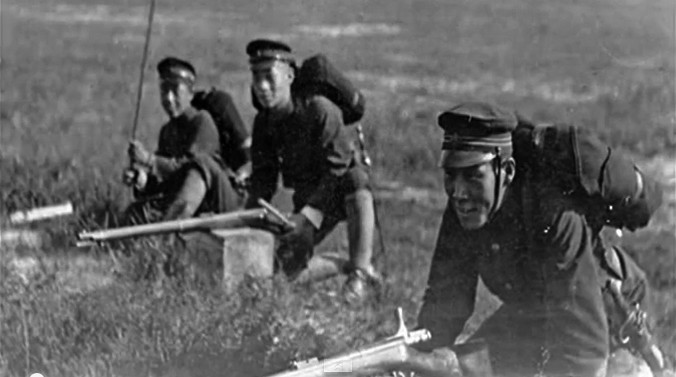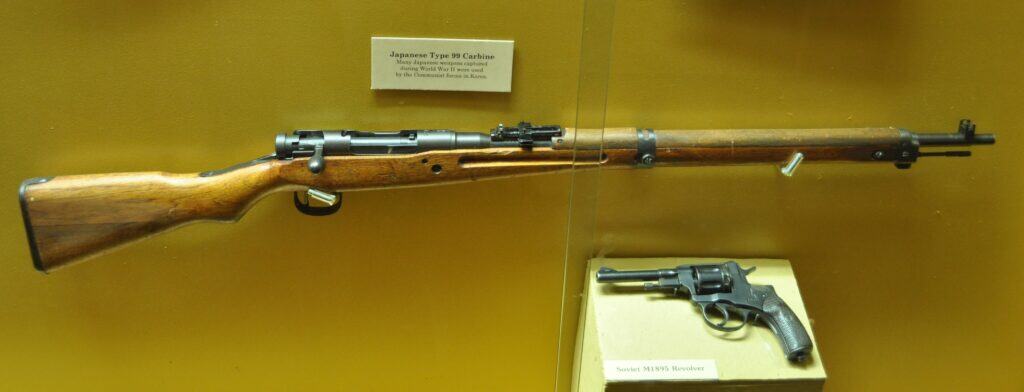
Introduction to the Meiji Type 18 Murata Rifle
In the grand narrative of firearm evolution, Japan’s Meiji Type 18 Murata rifle holds a unique place as the nation’s first domestically produced military rifle. Designed by Major Murata Tsuneyoshi, this rifle was a crucial step in Japan’s transition from imported weaponry to self-sufficient arms manufacturing. As the world’s great powers raced toward industrial and military modernization in the late 19th century, Japan sought to break free from reliance on foreign arms suppliers. The Type 18 Murata was the embodiment of that ambition.
Major Murata Tsuneyoshi: The Father of Japanese Military Firearms
Murata Tsuneyoshi was a visionary military officer and weapons designer, born in 1838, who played a central role in modernizing Japan’s arsenal. His exposure to European firearms during the Boshin War (1868–1869) cemented his belief that Japan needed a standardized, domestically produced rifle.
Recognizing the limitations of the mixed arsenal used by the Japanese military—ranging from outdated matchlocks to imported European rifles—Murata sought to create a rifle that would rival those used by Western powers. His efforts led to the adoption of the Meiji Type 13 rifle in 1880, which served as the foundation for the improved Type 18 Murata.
The Meiji Type 13 Murata: Japan’s First Standardized Rifle
Before the Type 18 Murata came the Meiji Type 13, adopted in the 13th year of the Meiji era (1880). This single-shot, bolt-action rifle, chambered for the 11×60mmR black powder cartridge, marked Japan’s first attempt at producing a modern firearm in large quantities. While revolutionary for Japan, it had several shortcomings, including a relatively weak receiver and a firing mechanism prone to wear.
The Meiji Type 18 Murata: Design, Improvements, and Features
By 1885, in the 18th year of the Meiji era, the Type 18 Murata rifle was introduced. It retained the same single-shot bolt-action mechanism and 11×60mmR cartridge, but included crucial design improvements:
- Enhanced Receiver Strength – Built with superior metallurgy, allowing greater durability.
- Centerfire System – Unlike the earlier needle-fire system of the Type 13, the Type 18 used a true centerfire primer, vastly improving reliability and safety.
- Improved Sights – The rear sight was refined for better battlefield accuracy.
- Stronger Bolt Mechanism – Increased durability and resistance to fouling.
- Updated Bayonet Lug – Redesigned to accommodate Japanese Murata bayonets, standardizing infantry gear.
One common misconception is that the Type 18 was designed for smokeless powder. In reality, it still utilized black powder cartridges. Japan did not transition to smokeless powder until the Type 22 Murata in 1889.
Type 13 vs. Type 18 Murata: Key Differences
| Feature | Type 13 Murata | Type 18 Murata |
|---|---|---|
| Action | Single-shot, bolt-action | Single-shot, bolt-action |
| Firing System | Needle-fire | Centerfire |
| Cartridge | 11×60mmR Black Powder | 11×60mmR Black Powder |
| Sight Improvements | Basic rear sight | Improved, adjustable rear sight |
| Receiver Strength | Moderate | Stronger metallurgy |
| Bayonet Mount | Basic mount | Enhanced bayonet compatibility |
While both rifles used the same cartridge, the Meiji Type 18’s improvements made it significantly more reliable and effective in combat.
Cartridge Specifications and Performance
The 11×60mmR cartridge was a powerful round by contemporary standards. Its ballistics and design provided improved range and accuracy over Japan’s earlier firearms.
- Bullet Diameter: 11.2 mm (.446 inches)
- Case Length: 60 mm
- Bullet Weight: ~278 grains (18 grams)
- Muzzle Velocity: 450–460 m/s (1,476–1,509 ft/s)
- Powder Charge: ~77 grains of black powder
This cartridge, while powerful, was quickly becoming obsolete by the late 19th century, as smokeless powder revolutionized ammunition performance worldwide.
Production and Service History
Approximately 130,000 to 150,000 Meiji Type 18 Murata rifles were manufactured before the adoption of the Type 22 Murata in 1889. While the Type 18 was in service during the First Sino-Japanese War (1894–1895), by the time of the Russo-Japanese War (1904–1905), it was largely relegated to reserve forces as newer rifles such as the Type 30 and Type 38 Arisaka became standard issue.
Modern Reloading for the Meiji Type 18 Murata
For enthusiasts seeking to reload the 11×60mmR cartridge, challenges include case availability and proper bullet sizing. Common solutions include:
- Brass Sourcing: Reloaders often modify .45-90 Winchester brass, resizing and trimming it to fit.
- Bullet Selection: Best results come from lead bullets .446" or .447" in diameter, weighing between 300 and 400 grains.
- Powder Options: Traditional black powder (77 grains) is preferred, but modern substitutes like Pyrodex can be used cautiously.
- Reloading Dies: Custom CH4D dies are available, and some reloaders modify .45-90 Winchester dies for cost-effective alternatives.
While some sources suggest smokeless powder loads, this is not recommended due to potential overpressure issues with the original Murata action.
Legacy of the Meiji Type 18 Murata
The Meiji Type 18 Murata represents a turning point in Japanese firearms history. It was a pivotal step toward Japan’s military self-sufficiency, laying the groundwork for future designs like the Type 22 Murata and the Arisaka series that followed.
Although it was ultimately outclassed by magazine-fed, smokeless powder rifles of the late 19th century, the Meiji Type 18 Murata’s significance cannot be overstated. It marked Japan’s emergence as a serious player in military firearms manufacturing and played an instrumental role in transitioning from reliance on imported weapons to a fully independent arms industry.
Conclusion
The Meiji Type 18 Murata rifle is not just a firearm; it is a symbol of Japan’s military modernization. Designed by Major Murata Tsuneyoshi, this rifle provided the Japanese military with its first true domestic firearm, bridging the gap between old-world black powder single-shots and the more advanced smokeless powder repeaters that followed. Its service history, unique design elements, and role in Japan’s firearms development ensure that the Type 18 remains an important piece of military history. Collectors, historians, and shooting enthusiasts continue to appreciate its historical significance, mechanical ingenuity, and place in the broader evolution of Japanese military arms.
Read more here:
Join forum discussions on this and other Japanese military rifles here.
Read more here:

Information about reloading can be found here:

If you know of any forums or sites that should be referenced on this listing, please let us know here.







